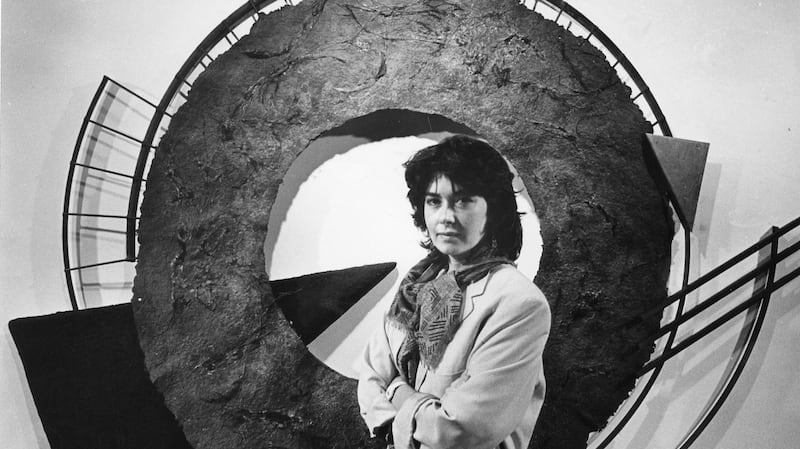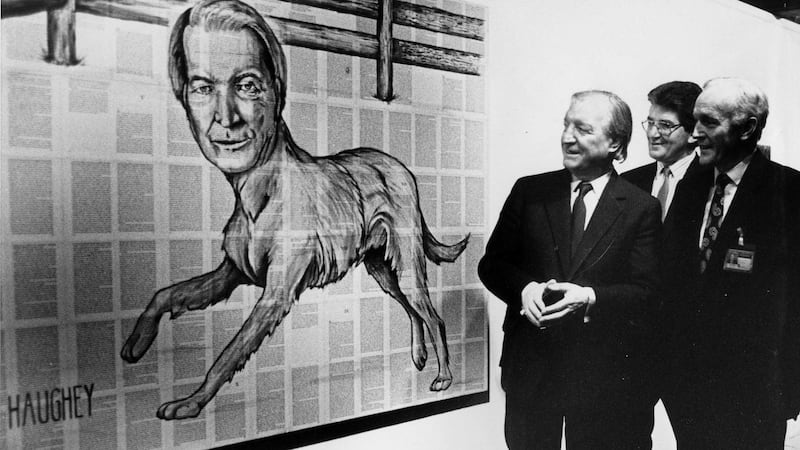The recent publication of The Poetry of Vision: The ROSC Art Exhibitions 1967-1988, written by Peter Shortt and published by Irish Academic Press, recalls memories and raises questions pertaining to that time in Irish art history.
According to Shortt, the founder of ROSC Michael Scott "deplored the absence of an enlightened museum of modern art in Ireland" and that "until such an institution was established, there was a need to periodically bring developments in the visual arts in the wider world to the attention of the Irish public and the artistic community".
Scott was right for many reasons.


Yet, although organised with the best of intentions, the endeavour was beset by controversy from the outset, not least because there were no Irish artists represented in the inaugural exhibition in 1967.
With each subsequent exhibition, held approximately every four years until the final show in 1988, there were controversies attached.
The general concept that Irish audiences and artists should experience international best practice had forerunners.
As far back as 1884, the Dublin Painting and Sketching Club hosted an exhibition that included the work of avant-garde artists John Singer Sargent (1856-1925) and James McNeill Whistler (1834-1903).
Work by Courbet, Millet, Manet, Monet, and Whistler was shown in an exhibition entitled Modern Painters, held in Dublin in 1899.
Some years later, in 1904, Hugh Lane brought the famous James Staats Forbes collection of art to Dublin.
Then in 1911, Ellen Duncan organised an exhibition titled Works by Post-Impressionist Painters at the United Arts Club in Dublin. Among the 47 works shown were drawings or paintings by Cezanne, Matisse, Rouault, Picasso, Denis, Vlaminck, and Signac.
No formal public funding
These exhibitions were organised without access to formal public funding and, quite apart from the enjoyment they offered audiences, they were vital to students and artists who simply could not afford to travel abroad to broaden their artistic horizons.
The difference with ROSC was the vision, and enormous scale, of the undertaking. This was going to be an exhibition to compete with the Venice and São Paulo Biennales, and the Documenta quinquennial.
Ireland was going to see the recent work of up to 50 international artists. The costs were enormous and, as Shortt highlights, the exhibitions ran with an ongoing deficit from the outset.
Controversy was rarely far from the visual arts in Dublin. Trouble arose, for example, during the exhibition in 1884, largely over Whistler’s work, which, according to some members of the Dublin Painting and Sketching Club, lacked merit.
There was sustained controversy over Hugh Lane’s collection of art and the longed-for gallery in which to house it, then more over the codicil to his will.
There was controversy over exhibitions held by the artists associated with the White Stag group during the Emergency, and about work exhibited by various artists showing with the Irish Exhibition of Living Art from 1943 onwards.
Then there was more uproar – this time over the refusal of Rouault's Christ and the Soldier in 1942.
Offered by the Friends of the National Collections to the Municipal Gallery, the advisory committee turned the work down and, in doing so, found themselves on the front pages of The Irish Times in October 1942, and this also during the Emergency and the second World War.
Bedrock of modernity
Debate is the bedrock of modernity, and the issues that arose over the ROSC exhibitions certainly created argument and discussion. The media, in general, and television, in particular, ensured a far greater audience for the exhibitions, and for the controversies, than had ever been available before.
Everyone was talking about ROSC, whether they went to see the exhibitions or not. School students were given days off to visit the exhibitions, politicians vied over opportunities to launch the shows, and there were protests about the unfairness of it all from young Irish artists.
In the early years anyway, it was all very exciting and new – before, what Shortt terms, a “weariness” set in.
There were serious problems with ROSC.
The first was the ongoing deficit, in spite of funding from the Arts Council, and various businesses. As director of the Arts Council, Colm O'Briain made a concerted effort to enforce stringent measures pertaining to the grant for the 1977 exhibition.
But the sheer scale of the six exhibitions, with work shipped in from Europe and America, was continuously financially demanding, and the debts accrued accordingly.
At the same time, the level of grant aid made by the Arts Council to the ROSC exhibitions was seen as detrimental to Irish artists, many of whom felt they were losing out on support.
Allied to the matter of Irish taxpayers’ money being used to grant aid to the exhibitions, through the auspices of the Arts Council, there was the serious and highly contentious issue of the treatment of Irish artists by the various selection committees.
Shortt deals with this aspect of ROSC in great detail but suffice to say that there were no Irish artists in the first two exhibitions.
Two Irish artists, James Coleman and Brian O'Doherty (as Patrick Ireland), made it into ROSC 1977; seven artists – William Scott, Patrick Scott, Michael Craig-Martin, Robert Ballagh, Brian King, Louis le Brocquy and Nigel Rolfe – made it into Rosc 1980; and 10 made the 1984 show, but only after major agitation. Seven made it into the final ROSC exhibition held in 1988.
Treatment of women
The treatment of women artists in general, and Irish women artists in particular, well illustrated a deeply entrenched patriarchy – in spite of the presence of women on the ROSC committee.
Whether Irish or international, women artists stood proudly at the vanguard of new developments in contemporary art.
But only four women were represented in ROSC 1967; five in ROSC 1971; none at all in 1977; and six in 1980. Irish women artists did not make it into ROSC until 1984, and then there were three; Anne Madden, Deborah Brown and Eilis O'Connell.
They were joined by one further woman, American sculptor Beverley Pepper. Of the seven Irish artists in ROSC 1988, which was promised to promote Irish art on the international arena, there were two women: Kathy Prendergast and Mary Fitzgerald.
The publication of Shortt’s excellent book has raised the question about whether or not Ireland needs another ROSC.
Shortt suggests, for example, that Dublin Contemporary 2011 – held in Earlsfort Terrace in 2011, the venue for ROSC 1980 – picked up on the "spirit" of Michael Scott's vision.
ROSC exhibitions certainly created new audiences for modern and contemporary art in Ireland; they also roused Irish artists to seek newer creative horizons, in spite of the fact that the work shown was often not the most up to date.
The scale of the exhibitions was magnificent. The controversies were magnificent. The poetry of vision was magnificent. But, there were serious problems, and as a result, as Fintan O’Toole noted in 1980, the exhibitions were severely limited by “slow crises and creeping catastrophe”.
ROSC was of its time, and of its context, and there is no reason to reprise it; we should let it rest in peace between the pages of Peter Shortt’s long-awaited book.
Dr Éimear O’Connor is an art historian, visual arts curator, and author









